Oversoul
The Tentacled One
This could easily have been Magic Memories: Fireball. Maybe it should have been Magic Memories: Fireball. Arguably, Fireball is the better card. Although really, there are several options with their own unique features...
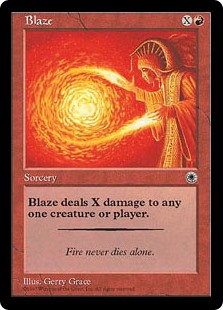
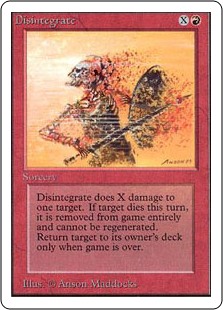
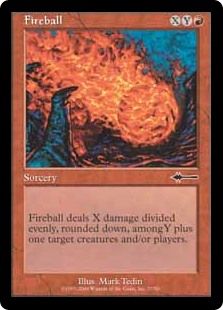
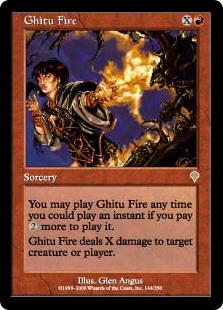
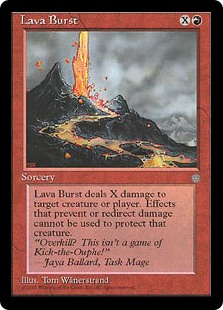
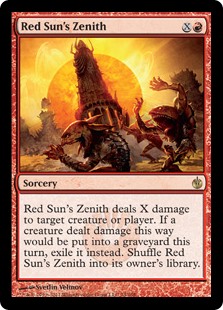
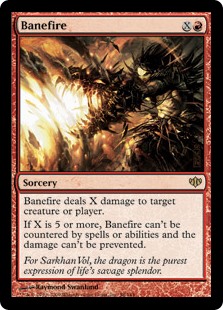

Historically, some of those weren't around yet for many of the decks I built. But Blaze, Fireball, Disintegrate, Kaervek's Torch, and Lava Burst were all available and I used all of them. A lot of the time, they're interchangeable. I've titled this thread with Kaervek's Torch, but a lot of the time, any of those other spells perform the same function. So let's break that down...
Blaze
As I've noted so many times, I got my start in Magic with the original Portal right after it came out. In the environment of Portal, Blaze was an extremely powerful card and it was easy to see. Blaze was introduced as a beginner's version of the effect already found on other red X spells. Although dumbing it down made it strictly worse than its predecessors, Blaze demonstrated that even a bare bones version of the effect was pretty good.
Lava Burst
Another thing I've noted in Memories threads is that much of my early collection was built from cheap grab bags from my local game store, which had a lot of Ice Age cards. So I acquired Lava Burst early on and it replaced Blaze in my hodgepodge "I'm an inexperienced Magic player and don't know what I'm doing" decks. I got a lot of mileage out of Lava Burst. I think it was one of the original cards in my Burn deck. By the time I wrote that horrid "Build a Better Burn Deck" article here at the CPA, I was advocating for more efficient direct damage spells and warned against X spells, but I think that was a relatively recent development in my deckbuilding at that point. I definitely remember using Lava Burst in my Burn deck in high school. Probably didn't take it out until 2003 or so. The anti-prevention effect hardly ever mattered. It could have been Blaze. But it wasn't. Also, Lava Burst just looks cool. Some underrated card art right there.
Fireball
The OG red X spell. Fireball is the most famous of the bunch and might still be the best overall. Its damage-splitting feature tends to matter more than the bonus effects on most other red X spells. More than almost any other card, Fireball might be responsible for making kids in the 1990's do math.
Disintegrate
The other original red X spell. Disintegrate could be used to prevent creature recursion, which doesn't usually matter, but matters a whole lot when it does. Because both Disintegrate and Fireball were in the game from the very start, casual players have frequently found themselves choosing between them. A common answer as "Why not both?" Other than that, the effect on Disintegrate really matters against decks heavily employing things like Animate Dead and Raise Dead, while Fireball's damage-splitting is has more general versatility.
Kaervek's Torch
Fireball might be more famous and more useful overall, but Kaervek's Torch became my favorite of the bunch. A big reason for that, not the only reason, but definitely a primary factor, was Force of Will...

It was a very popular card at the time. Unlike Fireball, Kaervek's Torch had built-in resistance to countermagic. And that counted for a lot.
Historically, some of those weren't around yet for many of the decks I built. But Blaze, Fireball, Disintegrate, Kaervek's Torch, and Lava Burst were all available and I used all of them. A lot of the time, they're interchangeable. I've titled this thread with Kaervek's Torch, but a lot of the time, any of those other spells perform the same function. So let's break that down...
Blaze
As I've noted so many times, I got my start in Magic with the original Portal right after it came out. In the environment of Portal, Blaze was an extremely powerful card and it was easy to see. Blaze was introduced as a beginner's version of the effect already found on other red X spells. Although dumbing it down made it strictly worse than its predecessors, Blaze demonstrated that even a bare bones version of the effect was pretty good.
Lava Burst
Another thing I've noted in Memories threads is that much of my early collection was built from cheap grab bags from my local game store, which had a lot of Ice Age cards. So I acquired Lava Burst early on and it replaced Blaze in my hodgepodge "I'm an inexperienced Magic player and don't know what I'm doing" decks. I got a lot of mileage out of Lava Burst. I think it was one of the original cards in my Burn deck. By the time I wrote that horrid "Build a Better Burn Deck" article here at the CPA, I was advocating for more efficient direct damage spells and warned against X spells, but I think that was a relatively recent development in my deckbuilding at that point. I definitely remember using Lava Burst in my Burn deck in high school. Probably didn't take it out until 2003 or so. The anti-prevention effect hardly ever mattered. It could have been Blaze. But it wasn't. Also, Lava Burst just looks cool. Some underrated card art right there.
Fireball
The OG red X spell. Fireball is the most famous of the bunch and might still be the best overall. Its damage-splitting feature tends to matter more than the bonus effects on most other red X spells. More than almost any other card, Fireball might be responsible for making kids in the 1990's do math.
Disintegrate
The other original red X spell. Disintegrate could be used to prevent creature recursion, which doesn't usually matter, but matters a whole lot when it does. Because both Disintegrate and Fireball were in the game from the very start, casual players have frequently found themselves choosing between them. A common answer as "Why not both?" Other than that, the effect on Disintegrate really matters against decks heavily employing things like Animate Dead and Raise Dead, while Fireball's damage-splitting is has more general versatility.
Kaervek's Torch
Fireball might be more famous and more useful overall, but Kaervek's Torch became my favorite of the bunch. A big reason for that, not the only reason, but definitely a primary factor, was Force of Will...
It was a very popular card at the time. Unlike Fireball, Kaervek's Torch had built-in resistance to countermagic. And that counted for a lot.
